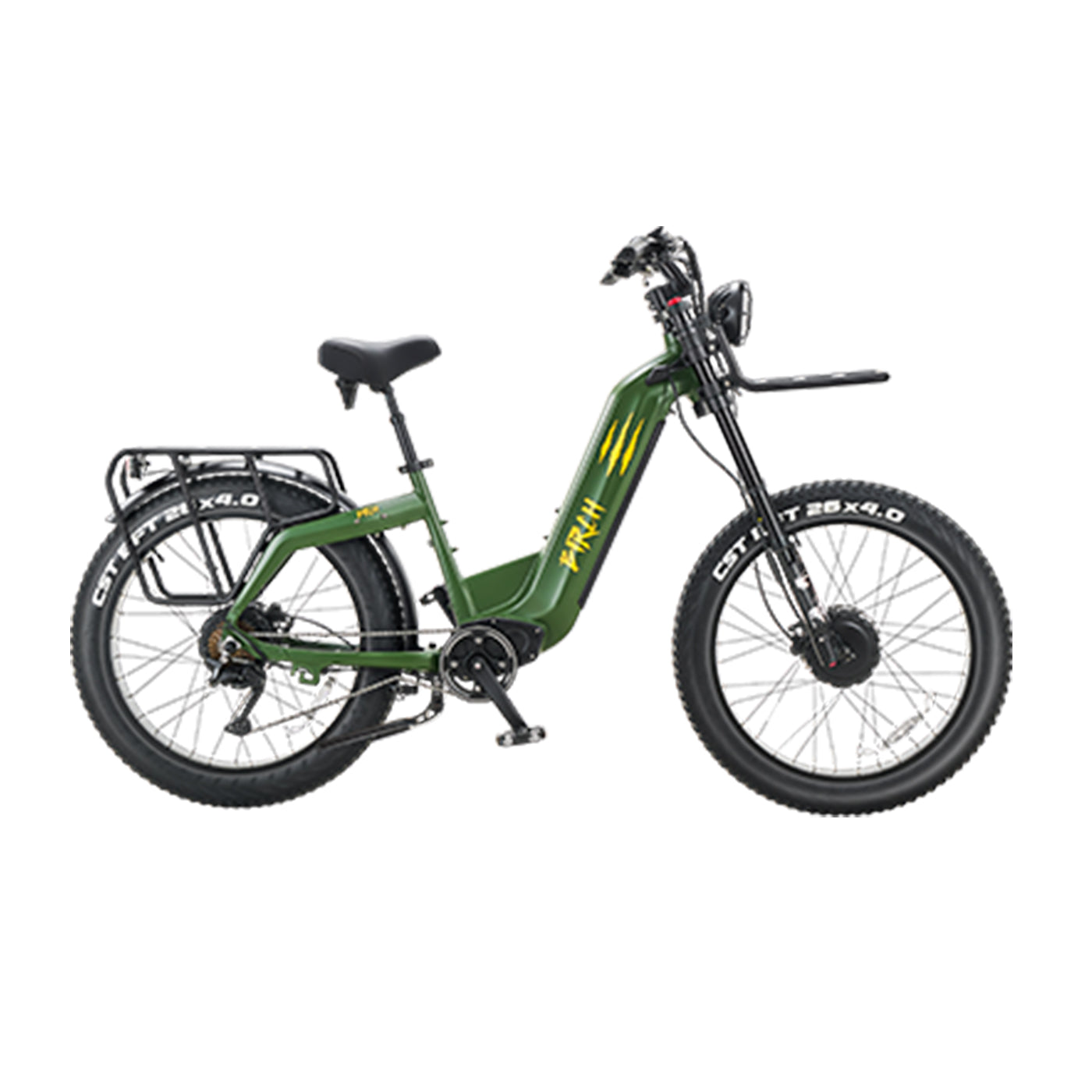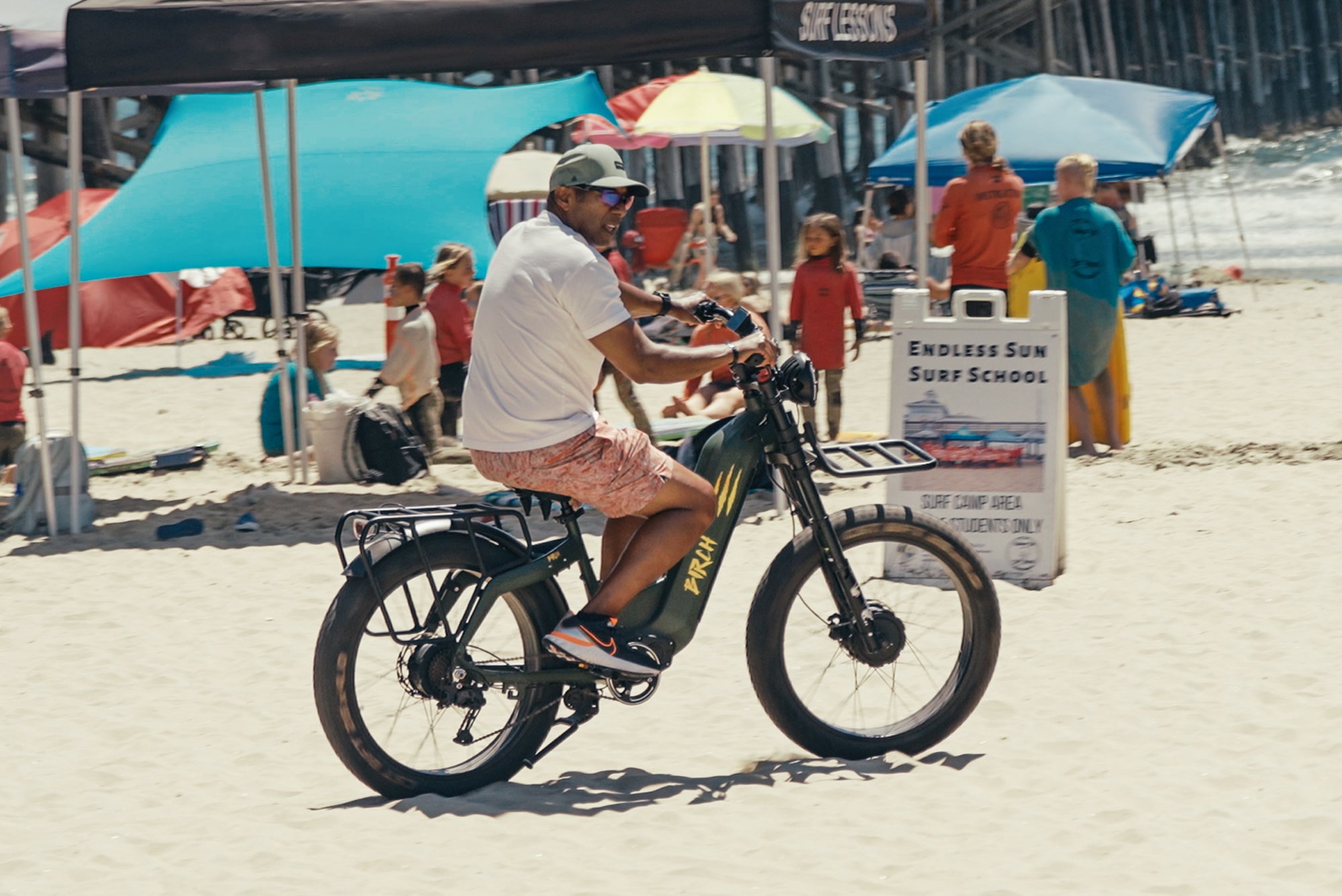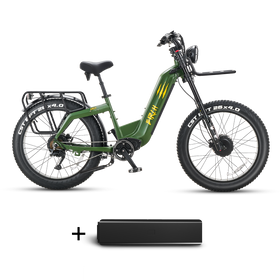Understanding Metrics and Real-Life Scenarios for eBike Climbing
When it comes to riding your eBike, one of the most important considerations is the terrain you’ll be tackling—especially when it comes to hills and inclines. If you’re a regular cyclist or an e-bike enthusiast, you've likely encountered the term "grade" when discussing climbs. But what exactly does that mean? And how can you convert a percentage grade into degrees to better understand the steepness of a hill? More importantly, how does this knowledge help you make better decisions on your rides?
In this blog, we’ll break down what you need to know about eBike climbing, how to convert grades from percentages to degrees, and the practical scenarios in which understanding these numbers can improve your cycling experience. Plus, we’ll explore how the Birch Grolar, a powerful dual-motor e-bike designed for serious climbing, handles these inclines.
What is a Grade?
Before diving into conversions, it’s essential to understand what a "grade" means in the context of climbing. The grade of a hill refers to its steepness, typically expressed as a percentage. This percentage describes how much elevation is gained over a certain distance horizontally. For instance, a 10% grade means the hill rises 10 meters vertically for every 100 meters you travel horizontally.
The steeper the grade, the harder the climb will be, which is especially significant for bikers who rely on their bike’s motor to assist with uphill efforts. Knowing how to interpret and convert these grades can help you gauge your effort and plan your route accordingly.

How is Grade Calculated?
Grade is often expressed as a ratio or percentage. To clarify:
Grade (%) = (Vertical Rise / Horizontal Distance) × 100
For example, if a hill rises 20 meters over a horizontal distance of 100 meters, the grade would be:
Grade = (20 / 100) × 100 = 20%
Converting Grades: From Percentage to Degrees
While grades are commonly represented as percentages, understanding the angle of the climb in degrees can offer a more intuitive sense of the hill's steepness, especially when comparing inclines visually.
To convert a percentage grade to degrees, you need to use the inverse tangent (arctan or tan⁻¹) of the grade's decimal form. The formula looks like this:
Angle (degrees) = tan⁻¹ (Grade as decimal)
Step-by-Step Conversion Example
If the grade is 10%, first convert it to decimal form:
- 10% as a decimal = 10 / 100 = 0.10
Next, take the arctan of 0.10:
- Angle = tan⁻¹ (0.10) ≈ 5.71
So, a 10% grade is approximately a 5.71 degree slope. The steeper the percentage, the higher the angle in degrees.
Common Grades and Their Corresponding Angles
|
Grade (%) |
Angle (degrees) |
|
5% |
2.86° |
|
10% |
5.71° |
|
15% |
8.53° |
|
20% |
11.31° |
|
25% |
14.04° |
|
30% |
16.70° |
|
40% |
21.80° |
These conversions give you a more precise understanding of the incline, which can be useful for estimating the difficulty of a climb.
Key Factors that Affect E-Bike Climbing Ability
Understanding grades and degrees isn’t the only factor that determines how well an eBike can handle a climb. Other important considerations include:
- Motor Power: E-bikes with higher wattage motors (e.g., 750W, 1000W) will generally perform better on steeper inclines. The Birch Grolar offers dual 750W motors with a combined output of 1500W.
- Torque: Torque, measured in Newton-meters (Nm), is a key factor for climbing power. Higher torque, such as the Grolar’s 160 Nm, allows an eBike to tackle steeper inclines more easily.
- Battery Capacity: Steeper climbs demand more energy, so a battery with a higher watt-hour (Wh) rating will be able to assist over longer periods.
- Weight of Rider and Bike: The more weight your e-bike needs to carry, the harder it will be for the motor to assist. A lightweight bike with a lighter rider will perform better on climbs.
- Terrain and Traction: Loose gravel, mud, and rocky paths can significantly increase the difficulty of a climb, even on less steep inclines.
Let's see how the Birch Grolar handles different climbs:
- Moderate Hill (5% Grade, 2.86° Angle)
- Scenario: You’re riding on a country road with a mild incline.
- Impact on eBike: With the Birch Grolar, this incline will feel like a breeze. The dual motors will effortlessly assist you, allowing you to maintain a smooth, relaxed pace without exerting any effort.
- Steep Climb (15% Grade, 8.53° Angle)
- Scenario: You're facing a steep hill on your trail.
- Impact on eBike: The Birch Grolar’s powerful specs come into play here. You'll find that the bike's power assist allows you to keep a consistent cadence with minimal effort, even as the hill steepens. The 1200Wh battery ensures that you have enough power to handle this climb, with energy to spare for the descent.
- Very Steep Hill (30% Grade, 16.7° Angle)
- Scenario: You're tackling a mountain trail with a punishing ascent.
- Impact on eBike: This is where the Grolar truly stands out. Designed to handle grades of up to 45%, this e-bike will easily climb this 30% grade, allowing you to focus on your ride instead of worrying about how much effort you’ll need to put in.
- Extreme Climb (45% Grade, 24.23° Angle)
- Scenario: This could be a technical ascent on a steep mountain pass or off-road trail.
- Impact on eBike: Whereas most other eBikes can only back out of this situation, the Grolar isn’t fazed by extreme climbs. The powerful motor system, combined with pedal assist settings, will likely keep you moving forward.
Conclusion

For e-bikers, mastering the interplay between bike specs, terrain, and steepness will ensure a smoother and more enjoyable ride. If you're looking for a bike that can tackle even the toughest climbs with ease, the Birch Grolar is your ideal companion. Dual 750W motors, 160Nm of torque, and an impressive 1200Wh battery, the Birch Grolar offers unmatched climbing power, allowing you to take on grades up to 45% without breaking a sweat. Whether you’re heading up a moderate hill or conquering a mountain pass, the Grolar will ensure you're always in control, no matter the grade.
Steep hills are just adventures waiting to be conquered by Birch. Are you ready to join in?


















Leave a comment
All comments are moderated before being published.
This site is protected by hCaptcha and the hCaptcha Privacy Policy and Terms of Service apply.